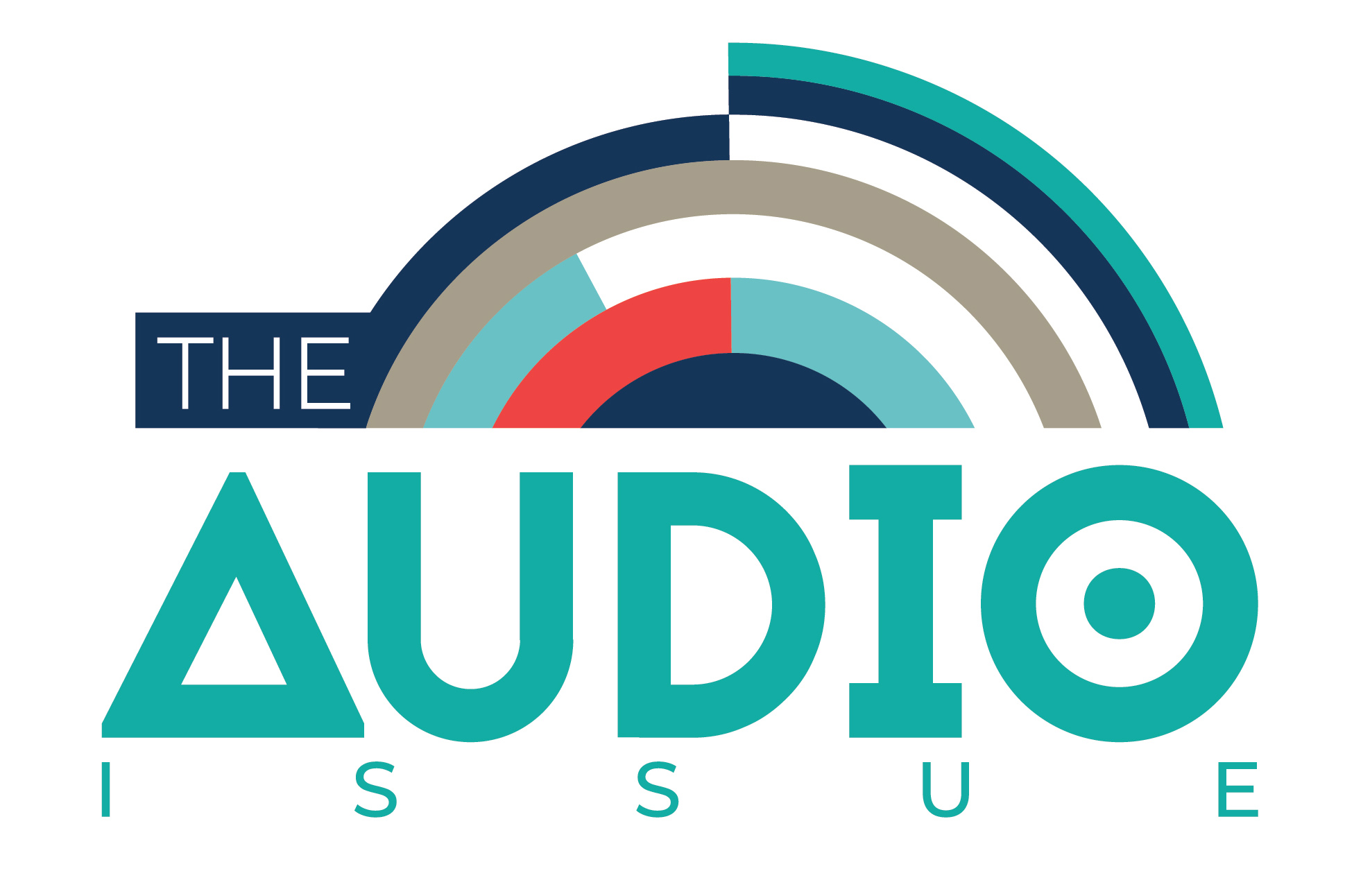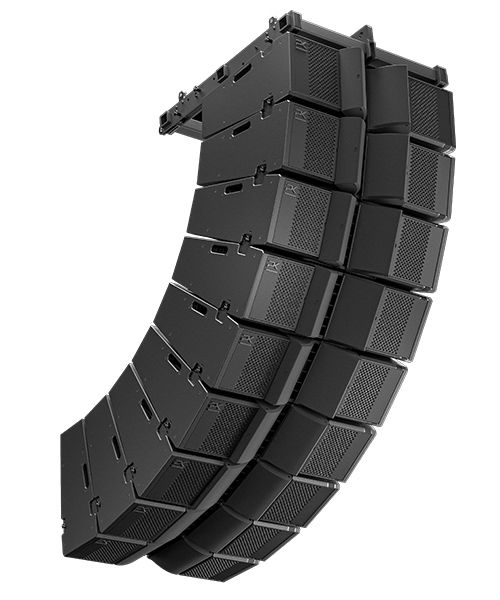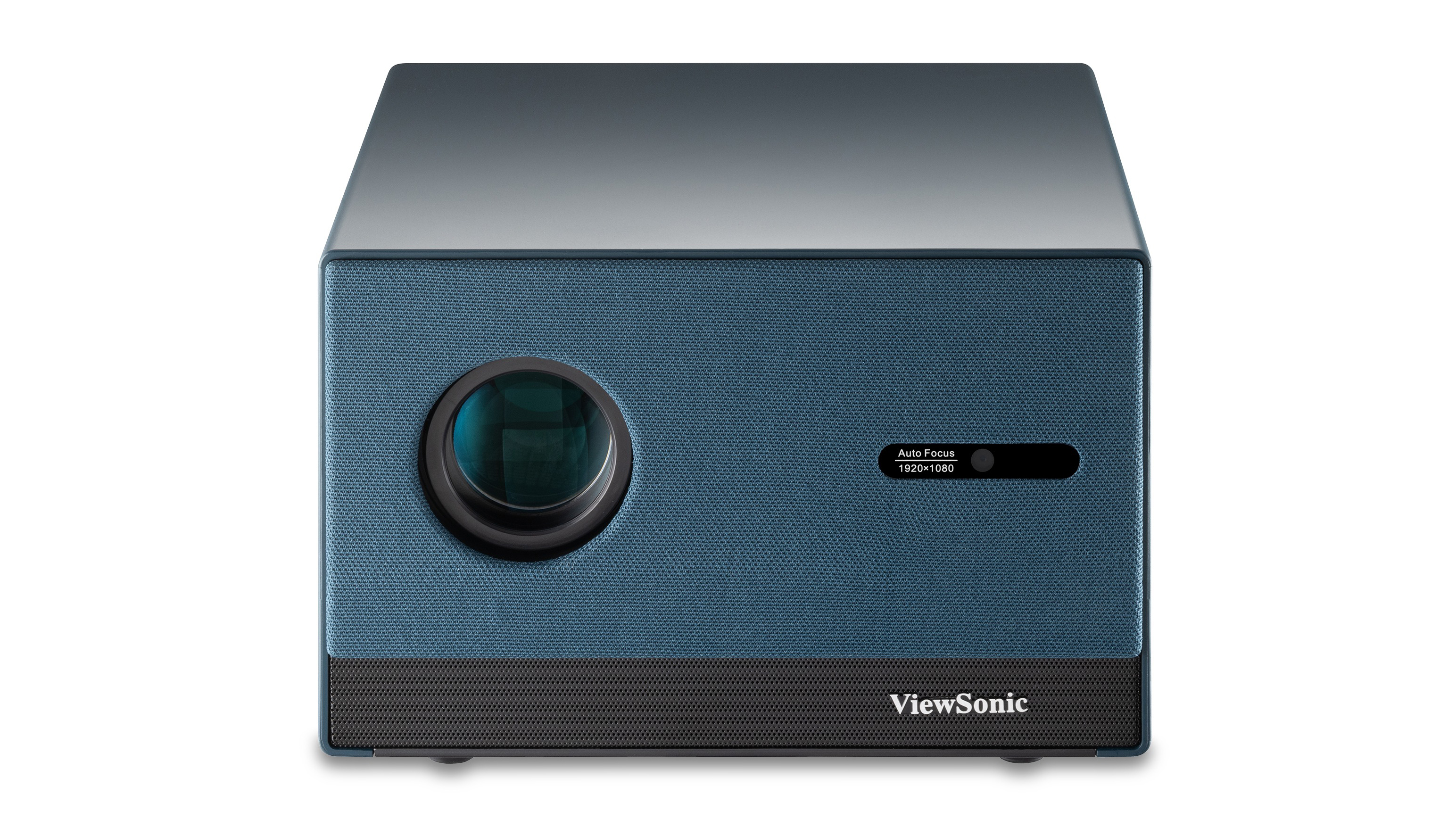Multi-Axis Audio Optimization
Robotic line source systems offer acoustic and operational advantages.


Today’s professional audio market abounds with excellent loudspeaker options, from distributed point-source systems to large-format line source solutions. Controlled by a skilled operator or engineer in an optimal acoustic environment, any number of solutions can deliver pristine, practically unimpeachable results.
While professional loudspeaker technology has arguably been perfected, the spaces in which said technology is deployed have not—at least from an acoustic context—which has resulted in the invention of the robotic line source system. Patented in 2015, robotic line source systems empower users with precise vertical and horizontal sound field manipulation, also known as multi-axis coverage control, both remotely and in real time via integrated robotic actuators.
With these systems, users can mechanically adapt acoustic coverage to the contours of any environment and essentially remove the room from the equation. This helps avoid reflective surfaces, reduce SPLs outside the target area, and, ultimately, negate the notable compromises to acoustic performance inherent in digital beam steering and other DSP-based measures.
Conventional Comparison
Robotic line source systems combine the principles of traditional line array theory with a modern, mechanical approach to system optimization. Remote and real-time robotic control of the multi-axis directivity of each module in an array enables the configuration of tapered, variable curvature systems precisely tailored to the dimensions and features of any space.

Designers and users of conventional line source systems are beholden to a limited number of pinholes to set the angles between modules in an array, typically in one-degree or two-degree increments. Once flown, these angles can’t be adjusted without landing the array and reconfiguring the pins. This makes integrators heavily reliant on advanced software simulations, but rarely if ever do these simulations exactly match their real-world counterparts.
A daily selection of the top stories for AV integrators, resellers and consultants. Sign up below.
Robotic systems allow users to adjust and fine-tune dispersion settings in real time, even after the system is flown. In the vertical plane, they offer an unmatched 0.1-degree of resolution between modules, eclipsing the conventional one-degree or previously best 0.5-degree increments. In larger deployments like arenas and stadiums, this degree of precision can improve sound coverage for hundreds if not thousands of patrons. Plus, a single robotic array can cover a significantly larger swath of the venue without a pullback motor when compared to a conventional counterpart.
Avoiding Reflections
The fixed and typically symmetric horizontal directivity of conventional line arrays often results in a significant portion of the sound field colliding with side walls and other boundaries or obstacles, reflecting back onto the audience or congregation. This increases reverberation, excites the room, and ultimately compromises sound quality and intelligibility. Subsequently, integrators can spend as much or more time and resources on acoustic room treatments as they do on the audio system itself.
Robotic systems allow users to adjust and fine-tune dispersion settings in real time, even after the system is flown.
In the horizontal plane, robotically controlled waveguides offer variable coverage options—in some cases spanning 60-120 degrees in symmetric and asymmetric configurations—allowing designers to adapt the sound field to the venue’s architecture and drastically reduce impact on reflective surfaces. For example, in a rectangular room with main left and right arrays closely flanked by side walls, robotic arrays can be asymmetrically tapered with the outer waveguide angles uniformly minimized to avoid impact on the walls, while inward dispersion is feathered from narrow angles on the uppermost elements that gradually increase in width with each descending module.
This degree of control is even more significant in spaces with complex geometry and architecture, such as modern-day houses of worship. It can also significantly benefit larger-scale deployments, where the seams between arrays can be minimized down to mere inches to ensure uniform arrival times and enhanced intelligibility.
Reducing Pollution
For installations in or near noise-sensitive environments, the goal is to precisely focus the sound field over the intended coverage area and minimize off-axis SPL levels. Extensive testing and measurement verify that variable multi-axis coverage offers notable SPL reductions in off-axis spaces, along with increased output and overall consistency across the listening area.
Variable multi-axis coverage control is an applicable solution for virtually any installed sound reinforcement application. In addition to mechanically tailoring coverage to any space with an unparalleled degree of precision, remote and real-time manipulation enables fast and efficient system reconfiguration in multi-use venues. What’s more, operators can easily recall dedicated system EQ settings for each configuration.
One of the fundamental principles of audio design is the less manipulation of the source signal, the better. Acoustic engineering is a complex and painstaking process. For a better experience with fewer compromises, it is important to ensure the basic attributes of the physical design are correct before digitally addressing a problem.
Robotic line source systems with variable multi-axis coverage control enable designers and users to precisely tailor a system in three dimensions. It also allows them to make decisions that positively impact the sound quality in virtually any indoor or outdoor application without the need for drastic DSP. Instead, the users can increase coherency and output by mechanically directing sound only where it’s intended, avoiding unwanted reflections and spillage. This ultimately provides a more rewarding live sound experience for client and stakeholders.
OSA Delivers High-Impact Audio to WWE HQ
The WWE brings private events home to its new Stamford, CT-based corporate headquarters, where it seeks to deliver the energy and excitement of a sold-out stadium bout into its stunning, sunlit atrium.
The atrium is a long, tall, and narrow rectangular space with the building’s massive glass façade on the west side and three stories of open balconies on the east, each with a high-resolution LED video screen as its fascia and a fourth lining the top of the space. The central LED wall on the south end spans four stories from the base of the main floor and commands attention from any vantage point.

To design and install a PK Sound T10 robotic line array system for the unique space, the WWE tagged in the team at OSA International, which has offices in Las Vegas, Nashville and Chicago. The system’s acoustic coverage is precisely tailored to the atrium’s architecture to maximize clarity and consistency.
“We program events like company town halls and parties in our lobby space, which presents some major acoustic challenges,” said Joseph Solari, VP of studio operations at WWE. “The PK Sound solution devised by OSA is configured to keep acoustic energy off reflective surfaces and focus it only where people are gathered, and the results are truly phenomenal. Our first town hall with the new system was like night and day compared to our previous events, with clean, intelligible, and impactful sound reproduction across the board.”
The main array of eight PK Sound T10 robotic line source modules is installed above the center of the south video wall via a custom rigging solution by Atlanta Rigging Systems, with a column of three T218 intelligent subwoofers flown behind it for ample low-frequency reproduction. From there, variable horizontal coverage is configured on each module in the array and easily reconfigured remotely via PK .dynamics control software.
[Meptik Is Ready to Rumble]
For events with smaller crowds, coverage can be symmetrically focused only on the ground floor. When the WWE hosts busier events with spectators on the upper floors, sound can be directed asymmetrically to include the crowds on the balconies while minimizing spillage onto the reflective LED screens. Content for the AV system is fed through a range of sources, including The Studios at WWE, the building’s new production facility that’s equipped with five studios and highlighted by a virtual production stage.
Shawn Wells is the market manager, Pro AV and live sound, for ACT Entertainment.

